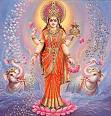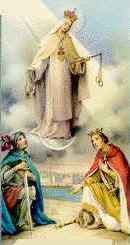
We all know that Transpersonal Psychology has been integrated to models of health, expressive arts and research in social sciences where psychiatry, anthropology, and sociology, among others, have benefited by this integration. The Institute of Transpersonal Psychology defines it as spiritual psychology, including mysticism, shamanism, state of consciousness, and presence of the divine within us. The shiftinNRG™ transpersonal view see humans as whole beings (mind, body, spiritual, social matter).
In this view, spirituality is perceived as an indissoluble part of human existence or nature. Thus, Transpersonal Psychology is presented as an integrative model with consciousness playing a crucial role on it.

The body is an unified and integrated energy system, and we know that physical, spiritual, and emotional unbalances have their source in energy. The Association for Comprehensive Energy Psychology (ACEP) talks about Energy Psychology as a "family of mind/body techniques to help with a wide range of conditions addressing the human vibrational matrix." For us, Energy Psychology is part of Energy Medicine defined as a tool derived from Quantum Physics, Biomagnetism, Shamanism, and Tantric/Chinese philosophy and medicine. The International Society of the Study of Subtle Energies and Energy Medicine (ISSSEEM) stresses the importance of the energetic component of many disciplines as quantum physics, therapeutic modalities, healing, psychology, consciousness among others. We stand in the belief that Energy Psychology and Medicine addresses the physical/spiritual/social and emotional bodies as a whole indissoluble totality, always in the search for balance and harmony.
 Dance Movement Therapy
Dance Movement Therapy 
According to the American Dance Therapy Association (ADTA), dance Movement therapy (DMT) is the psychotherapeutic use of movement as a process that furthers emotional and physical integration of the individual. Variations and interpretations in the application of the technique depend on the dance therapist’s theoretical approach as well as practical experience.
Three pioneers in the DMT field are Marian Chace, Mary Whitehouse, and Blanche Evan. Chace uses simple rhythm to provide boundaries within the group, Whitehouse’s Jungian training allows for the use of imagery as a way to integrated body and emotions and its relationship with the collective. Evan, an Adlerian DMT uses creative dance while “tapping into one’s neurosis” in the journey toward healing. AT shiftinNRG™, we believe that we learn and develop certain movement repertoire that will make us unique individuals. We work with this repertoire, exploring its emotional, social and spiritual implication in our life, since we are as we move.

 Expressive Arts Therapy
Expressive Arts Therapy
Defined by the International Expressive Arts Therapy Association (IEATA) as a "multidisciplinary and Intermodal approach to creativity grounded on how the arts responds to human experience." For us, it is a language to access and disclose our true being.

 Expressive Arts Therapy
Expressive Arts TherapyDefined by the International Expressive Arts Therapy Association (IEATA) as a "multidisciplinary and Intermodal approach to creativity grounded on how the arts responds to human experience." For us, it is a language to access and disclose our true being.
 Shamanism
Shamanism
For Michael Harner is a Mental-Emotional journey to transcend ordinary reality. For Joan Halifax is an ecstatic religious and ideological experience. Carlos Castaneda's journey to "no ordinary" reality is also considered a Shamanic State of Consciousness. For us, Shamanism is a Cross-Cultural practice that allows for the expansion of our awareness while accessing new levels of perception which in turn brings vitality and creativity in the balancing of our inner/outer worlds.

.gif) Assemblage Point (AP)
Assemblage Point (AP)In the Shamanic Toltec tradition the Assemblage Point (AP) is a Vortex of Energy located deep in the chest that can be shifted to attain consciousness expansion, balance and health. Dr Jon Whale has been the only researcher capable of, scientifically, explaining and illuminating the presence of the AP . More information about Dr. Whale at:
(http://www.whalemedical.com/)

 Quantum PhysicsDerived from Quantum theory sees energy as waves. The universe is perceived as a non-linear reality where interchangeability of matter and energy takes place. Deepak Chopra has been credited as introducing Quantum Physics in the mind/body healing paradigm. His Quantum Healing allows for shifting of the body and mind level of consciousness. Fred Alan Wolf, in his famous Quantum Physics model of the ego, talks about the body as large memory bank forming egoic structures that deal with the wave of life. For us, quantum physics, is a model that explains how consciousness and matter complement each other in a sense that our intention/mind/feeling choices become matter.
Quantum PhysicsDerived from Quantum theory sees energy as waves. The universe is perceived as a non-linear reality where interchangeability of matter and energy takes place. Deepak Chopra has been credited as introducing Quantum Physics in the mind/body healing paradigm. His Quantum Healing allows for shifting of the body and mind level of consciousness. Fred Alan Wolf, in his famous Quantum Physics model of the ego, talks about the body as large memory bank forming egoic structures that deal with the wave of life. For us, quantum physics, is a model that explains how consciousness and matter complement each other in a sense that our intention/mind/feeling choices become matter.  Biofield/Electromagnetic Fields
Biofield/Electromagnetic Fields  Human Bioenergies have been referred to prana, chi, ki, orgone, mana, homeopathic resonance and so on. The International Society for the Study of Subtle Energies and Energy Medicine (ISSSEEM) describes human biofield as moving through our subtle energy body so expansions of consciousness are related to changes in subtle energies. The Center for the Study of Alternative and Complementary Medicine states that our body is made of subtle energy fields which radiates, absorbs and conducts frequency waves of energy. We believe that we work at particular frequencies of energy so we have personal/individual biofields with particular characteristics along the electromagnetic spectrum.
Human Bioenergies have been referred to prana, chi, ki, orgone, mana, homeopathic resonance and so on. The International Society for the Study of Subtle Energies and Energy Medicine (ISSSEEM) describes human biofield as moving through our subtle energy body so expansions of consciousness are related to changes in subtle energies. The Center for the Study of Alternative and Complementary Medicine states that our body is made of subtle energy fields which radiates, absorbs and conducts frequency waves of energy. We believe that we work at particular frequencies of energy so we have personal/individual biofields with particular characteristics along the electromagnetic spectrum.
 Diversity in Psychology
Diversity in Psychology Multicultural Psychology is born due to the need of Mental health professionals to be aware and comprehend cultural practices among and between people. The term multiculturalism generally refers to "us" and "them" as separated consciousness or identities. We all know that diversity within demographics has to do with the role played by culture in our lives. Later on the term crosculturalism was used to elucidate the presence of the famous "melting pot" where all cultures were the same. Race, ethnicity and culture seem to play an important role on individual identity. Multicultural-Crosscultural Counseling always refers to guidelines for counseling with culturally different clients. Research of Wing Sue, Arredondo and McDavis provide suggestions for an effective work with culturally different clients. In the Encyclopedia of Multicultural Psychology, Buhin's discusses Sue's Model on Multicultural training stating that "It is complex and comprehensive and covers counselor training, client assessment, diagnosis, and treatment." Modern approaches point at Diversity as our own sole and distinctive way of acting and seeing the world. In our research and practice we believe on "integral uniqueness" as a viable approach to diversity. In this line of thought, Individuals are seeing as only one of its kind which are matchless and unique. Consciousness Raising by Parker and Fukuyama seems to be a very comprehensive approach to diversity. This since the spirituality perspective brought in by Fukuyama adds a totally integral dimension to the work. Rosa Granadillo-Schwentker copyright 2008-2013 & shiftinNRG™ .

ABOUT CULTURALLY EFFECTIVE COMMUNICATION(Source Unknown)
Communication is an essential skill utilized by any one. It is important to be a culturally competent communicator. It is also important to identify our belief system to spot blocks to communication:
ETHNOCENTRISMInability to accept another culture's world view; "my way is the best"DISCRIMINATION
Differential treatment of an individual due to minority status; actual and perceived; e.g., "we just aren't equipped to serve people like that."
STEREOTYPING
Generalizing about a person while ignoring presence of individual difference; e.g., "she's like that because she's Asian -- all Asians are nonverbal."
CULTURAL BLINDNESS
Differences are ignored and one proceeds as though differences did not exist; e.g., "there's no need to worry about a person's culture -- if you're a sensitive person, you do okay."
CULTURAL IMPOSITION
Belief that everyone should conform to the majority; e.g., "we know what's best for you, if you don't like it you can go elsewhere."
























